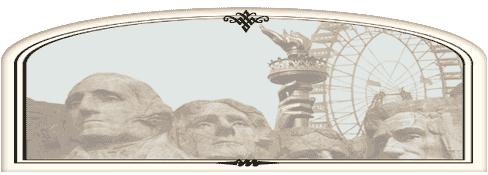Unit 3: Facing Freedom's Boundaries
1. Questioning Freedom
* Questioning Freedom #
* Questioning Freedom #
* Questioning Freedom #
2. Coney Island.
This PBS documentary describes the history of the amusement parks on New York's Coney Island. Students are required to watch the entire film. As you watch, consider the ways in which Coney Island reflected the changing culture of an increasingly industrial, urban culture.
* Click here to watch Coney Island
3. Unit 3 Project Films
"Ellis Island" - This clip from the documentary film series, New York, describes what it was like for immigrants to arrive at Ellis Island, one of the main government processing centers for those immigrating to America.
* Click here to watch "Ellis Island"
"History of New York City" - These four clips from the documentary series, New York, discuss the challenges that urbanization in Gilded Age America presented to ideas about freedom and democracy. The final clip describes how a revolutionary new technology, moving pictures, captured the bustling new metropolitan culture of New York.
* Click here to watch "History of New York City" #1
* Click here to watch "History of New York City" #2
* Click here to watch "History of New York City"#3
* Click here to watch "History of New York City" #4
"History of Transportation" - These three clips from the documentary series, New York, describe how innovations in transportation were critical to the growth of New York City.
* Click here to watch "History of Transportation"
"Brooklyn Bridge" - This clip from the documentary series, New York, describes the final phase in the construction of the Brooklyn Bridge.
* Click here to watch "Brooklyn Bridge"
"History of the Skyscraper" -
* Click here to watch "History of the Skyscraper"
"History of Central Park" -
* Click here to watch "Central Park"
"History of the Statue of Liberty" - This clip from the documentary film series, Ken Burns’ America Collection, describes how the French government gave the giant statue that now sits in New York Harbor as a gift to the people of the United States honoring the centennial of the American Revolution.
* Click here to watch "History of the Statue of Liberty"
"The New Colossus" - This clip from the documentary film series, “Ken Burns’ America Collection,” includes a dramatic reading of the poem by Emma Lazarus that is carved on the base of the Statue of Liberty.
* Click here to watch "The New Colossus"
"Immigrant Life" -
"Jacob Riis" - This clip from the documentary film, New York, describes the work of Progressive Era photographer and muckraker, Jacob Riis.
"The Ziegfeld Follies" - This clip from the documentary film, “Broadway: The American Musical,” describes the famous Ziegfeld Follies, which were first held in the New Amsterdam Theatre. The Ziegfeld Follies blended elements of immigrant culture with American (both white and black) theatrical traditions. The Follies appealed to the diversity of people who made up New York City’s booming population and were part of the emerging mass metropolitan culture that came to dominate American in the 20th century.
* Click here to watch "The Ziegfeld Follies"
"History of Ragtime" - Composed and played primarily by blacks, Ragtime became popular with Americans of all races and cultures at the turn of the twentieth century. For many people, Ragtime was a thoroughly modern kind of music, perfect for a society being transformed by all sorts of new fangled things, like telephones and electric lights and horseless carriages.
* Click here to watch "History of Ragtime"
"The Triangle Fire" - This clip from the documentary film series, New York, describes one of the worst industrial disasters in the history of New York City. The fire that swept through the garment factory in the Asch Bldg. on the afternoon of March 25, 1911, killed 146 garment workers, mostly young immigrant women.
* Click here to watch "The Triangle Fire" |
